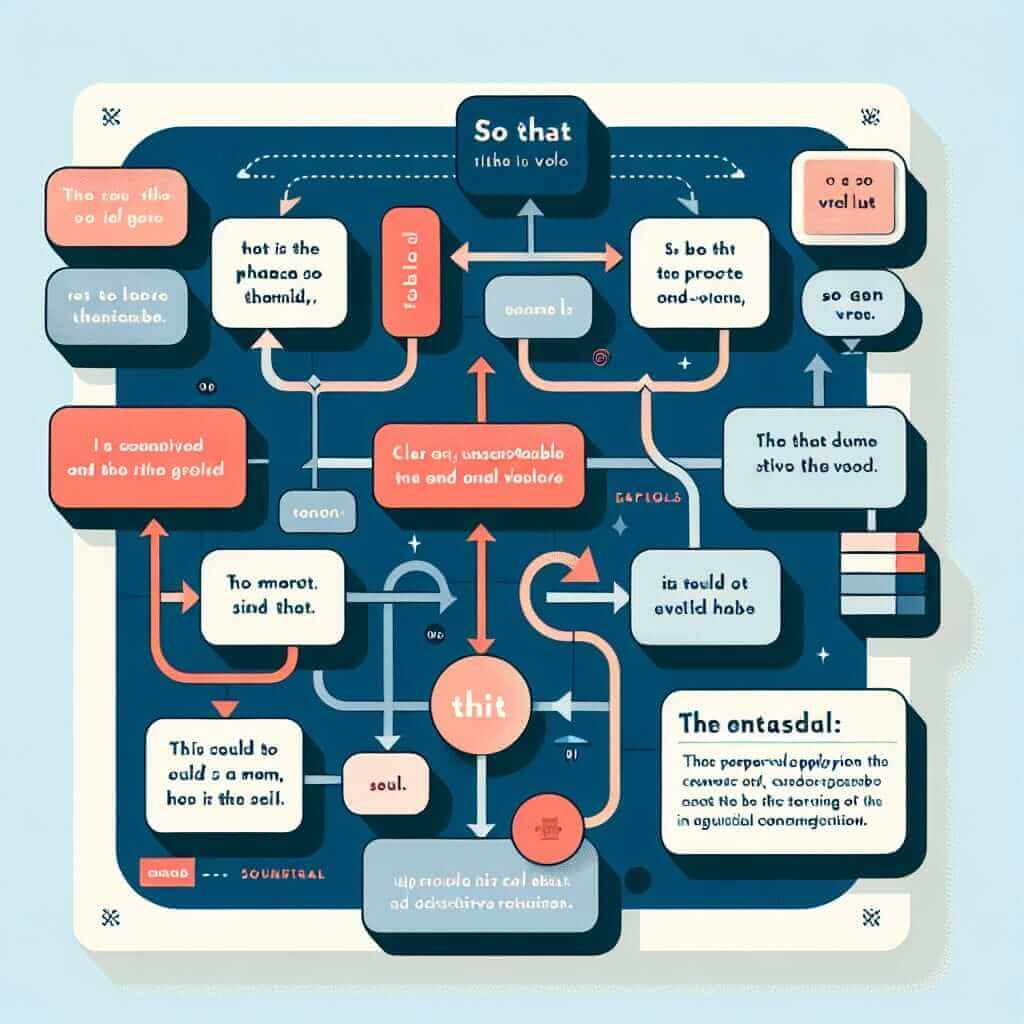The use of “so that” followed by a modal verb is a versatile grammatical structure that can significantly enhance your writing and speaking scores in the IELTS exam. This construction allows you to express purpose and intention clearly and concisely, demonstrating a higher level of grammatical range and accuracy.
Let’s look at a few examples of how “so that” + modal verb can be used across different sections of the IELTS:
Speaking Part 2: “I joined a local photography club so that I could improve my skills and meet like-minded people.” (Purpose of joining the club)
Writing Task 1: “The government has implemented new policies so that they can reduce carbon emissions by 20%. “ (Purpose of the new policies)
Writing Task 2: “Education should be free for everyone so that all members of society can have equal opportunities.” (Expressing an opinion on the purpose of free education)
Understanding “So That” + Modal Verb
The “so that” construction indicates that an action is performed with a specific purpose in mind. The clause following “so that” explains the intended outcome of the action in the main clause.
Modal verbs (can, could, will, would, may, might, should) are used after “so that” to express the possibility, ability, permission, or necessity related to the intended outcome.
Using “So That” + Modal Verb
Formula:
Main Clause + so that + Subject + Modal Verb + Base Form of Verb + Rest of the Clause
Breakdown:
- Main Clause: This part of the sentence describes the action taken.
- So that: This conjunction links the action to its purpose.
- Subject: The person or thing performing the action in the purpose clause.
- Modal Verb: This indicates the likelihood, permission, or ability related to the outcome (can, could, will, would, may, might, should).
- Base Form of Verb: The verb describing the intended outcome.
- Rest of the Clause: Any additional information related to the purpose.

Examples:
- Speaking: “I always carry a reusable water bottle so that I can stay hydrated throughout the day.”
- Writing Task 1: “The graph shows a significant increase in online sales, suggesting that businesses are adapting their strategies so that they can reach a wider customer base.”
- Writing Task 2: “Governments should invest in renewable energy sources so that we can mitigate the effects of climate change.”
Mastering “So That” for a Higher Band Score
To achieve a Band 7 or higher, it’s essential to:
- Use a Variety of Modal Verbs: Demonstrate your range of vocabulary by choosing the most appropriate modal verb to express the specific nuance of purpose.
- Combine with Other Complex Structures: Integrate “so that” clauses within complex sentences containing other grammatical structures like conditionals or relative clauses.
- Formal and Informal Contexts: Adapt your language register by using “so that” in both formal writing and informal speaking scenarios.
Examples:
- Formal (Writing Task 2): “International cooperation is essential so that we might effectively address global challenges such as poverty and inequality.”
- Informal (Speaking Part 1): “I usually take the bus to work so that I don’t have to worry about finding parking.”
Common Errors and How to Avoid Them
- Incorrect Verb Tense: Ensure the verb tense in both clauses is consistent and reflects the intended meaning.
- Missing Modal Verb: Remember that a modal verb is necessary after “so that” to express the intended possibility or ability.
- Overuse: While useful, avoid overusing “so that” in your writing or speaking. Vary your sentence structure to maintain reader/listener interest.
By understanding the nuances of using “so that” with modal verbs, you can significantly improve the clarity, sophistication, and overall quality of your IELTS responses, paving the way for a higher band score.